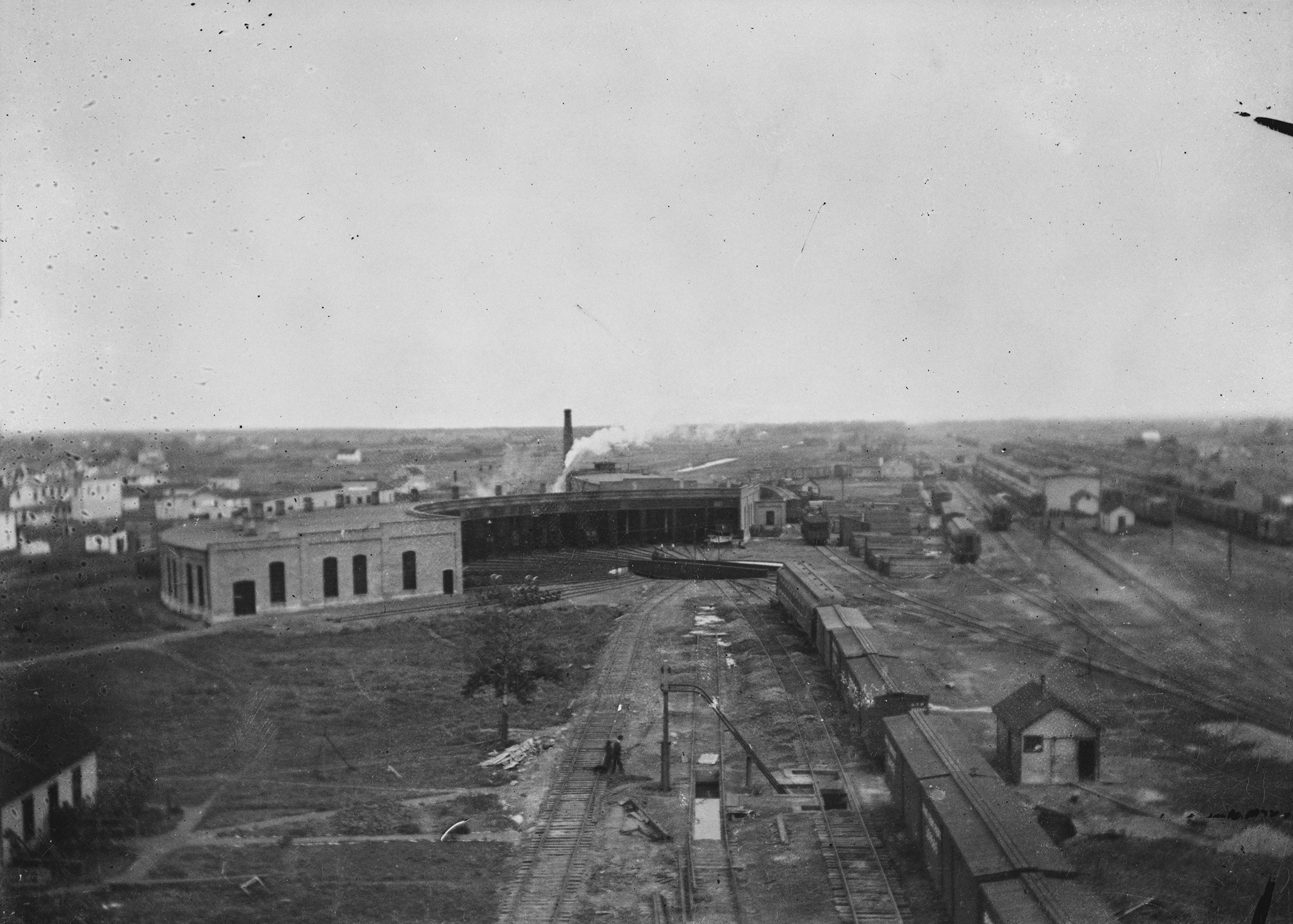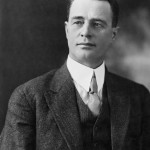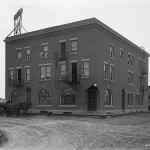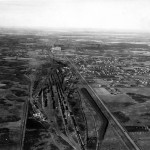Calder’s story began in the early years of the 20th century when GTPR decided to locate its roundhouse, repair shop and shunting yards beside today’s 127th Avenue west of 118th Street. As work began on the $100,000 project in September 1908, workers were housed in a tent city, which was erected beside the new rails.
In its early days of operation, GTPR’s 18-stall brick roundhouse and adjacent maintenance facilities provided employment for 200 men. The first house was built in 1909 and early pioneers included retail merchants J.N. Beaudry and A.W. Young.
The village of West Edmonton was established in July 1910 and the first meeting of councillors W.G. McConnache, A.W. Young and J. Shotton was held the following month. A school was established in the Presbyterian Church, with Miss D.A. Dewar as teacher.
Hugh Alfred Calder was one of those who played a prominent role in the early development of the community. Born in Bridgewater, Nova Scotia in 1873, Calder moved to Labrador as a young man, where he started its first lumber company. He arrived in Edmonton in 1902 and went to work scouting suitable timber for ties for the GTPR.
Calder founded the Calder Land Company in 1907, and in 1910 he and agent J.R. McIntosh began marketing some of the 160 acres of the village of West Edmonton. “A FUTURE HIVE OF INDUSTRY,” trumpeted a 1911 newspaper ad, in all-capitals text. “45 DWELLINGS, 3 STORES, 3 CHURCHES, 1 SCHOOL and a modern and complete TELEPHONE SERVICE.”
The ad went on to note the GTPR shops adjoined the subdivision, guaranteeing a payroll of several hundred men. Roads were given names including Grace, Bertha, Notre Dame, Park and Agnes. The main thoroughfare that is now 127th Avenue was called Brandon Avenue.
Calder Land Company offered 644 lots at $175 ($224 for a corner) and for $58 down, the balance could be paid over two years at an interest rate of seven percent. Sales were brisk and within a few months, the new village was home to more than 500 residents.
Edmonton was booming and when Calder’s Bronx subdivision went on the market in early 1912, 1,200 lots sold in just three days. With that kind of demand, prices quickly surged and by the end of the year, parcels were going for more than $400. The community may have been registered as the Village of West Edmonton, but locals started calling it “Calder,” and the name stuck.
Besides his real estate ventures, Mr. Calder also worked as an alderman, first for Strathcona and then Edmonton, from 1908 to 1916. He served overseas as major with the Alberta Dragoons and was commanding officer of the Canadian Forestry Battalion stationed in Scotland. Upon his return from the war, he retired to his farm in South Edmonton.
A story in the February 22nd, 1913 edition of the Edmonton Daily Capital heralded the new development. “West Edmonton, as it is now known, has shown remarkable development during the past three years. From a village it has developed into a town of many residents and industries, the latter of which provide a $35,000 pay roll.”
But what Calder didn’t have was modern-day conveniences like electricity, running water, a sewage system and bus service. The Edmonton Bulletin noted the dire need in a December 1915 article, when the village’s population was 1,100. “Civic utilities are the outstanding requirements of the entire district, and even Calderites look forward most hopefully to the time when the village may be served with electric lights, city water and city telephones.”
That desire for services prompted Calder to begin negotiations to join Edmonton in 1913, but it wasn’t until 1917 that the deal was done. Even so, urban amenities were many years away; main roads were finally paved in 1950 and the sewage system became fully operational in 1953.
When GTPR ran into financial difficulties in 1919, the federal government folded it into the new Canadian National Railways (CNR). By January 1923, all the operations of the GTPR were absorbed into the CNR.
The present day Calder neighbourhood includes the former village of West Edmonton (west of 120 Street) and Elm Park (east of 120 Street). The Elm Park subdivision was established in 1907 and became part of the city of Edmonton in 1913.
Most of the area south of 130th Avenue between 116th and 125th streets was subdivided in 1905, 1909 and 1910, when a grid pattern was used. The northern and eastern portions of the neighbourhood were subdivided last, in the 1950s, as reflected in the use of crescents and small amenity parks, which were popular design features of the time.
A long-time Calder landmark is the Dover Hotel, at the corner of 127th Avenue and 120th Street. But it wasn’t always there. The hotel was constructed as The Strand in the autumn of 1912 at the corner of 122nd Street and 129th Avenue. It was a $50,000 building, billed as completely fireproof and its 40 rooms were fitted with “the latest furnishings known to the hostelry world.”
But apparently the location wasn’t working and in 1927, aiming to pick up more of traffic from the adjacent railyards, the hotel was lifted up and hauled to 12704 120th Street. The Strand was renamed the Dover in 1951.
Other early business ventures included a livery, situated at 12020 128th Street, and which operated for more than 40 years. The Calder Public School, started in the 1920s and overseen by principal Olive I. Srigley, was located at 12920 116th Street.
Elm Park Greenhouses, run by Frederick S. Jones, operated from 131st Avenue and 115th Street. Jones, who was a builder, a stonemason and a bricklayer, used his skills to build a clinker brick-clad Craftsman-style bungalow at 13067 115th Street. The 1926 house is now a Municipal Historic Resource.
Another long-time neighbourhood landmark was Orbeck’s Grocery, which operated at the corner of 117th Street and 129th Avenue for nearly 45 years. William and Cassie Orbeck opened the store in May 1932, the depths of the Great Depression, and ran it until 1977. The story goes that Calder School students often used to sneak away at recess to buy candy at Orbeck’s, which had a reputation for the best selection of candy around.
Hugh Alfred Calder lived to be 91 years old and died in 1964 in Vancouver. He outlived his wife Gertrude Adelade by 21 years; she died in 1945 at the age of 64. They were survived by three daughters and one son.
While many of the early businesses are now footnotes in history, many of the early single-family dwellings have survived. So too has the unmistakable screech of steel on steel and the shunting of boxcars. That’s the sound of a place built on the sweat and toil of railway workers over the course of a century.
© Lawrence Herzog 2014, All Rights Reserved






